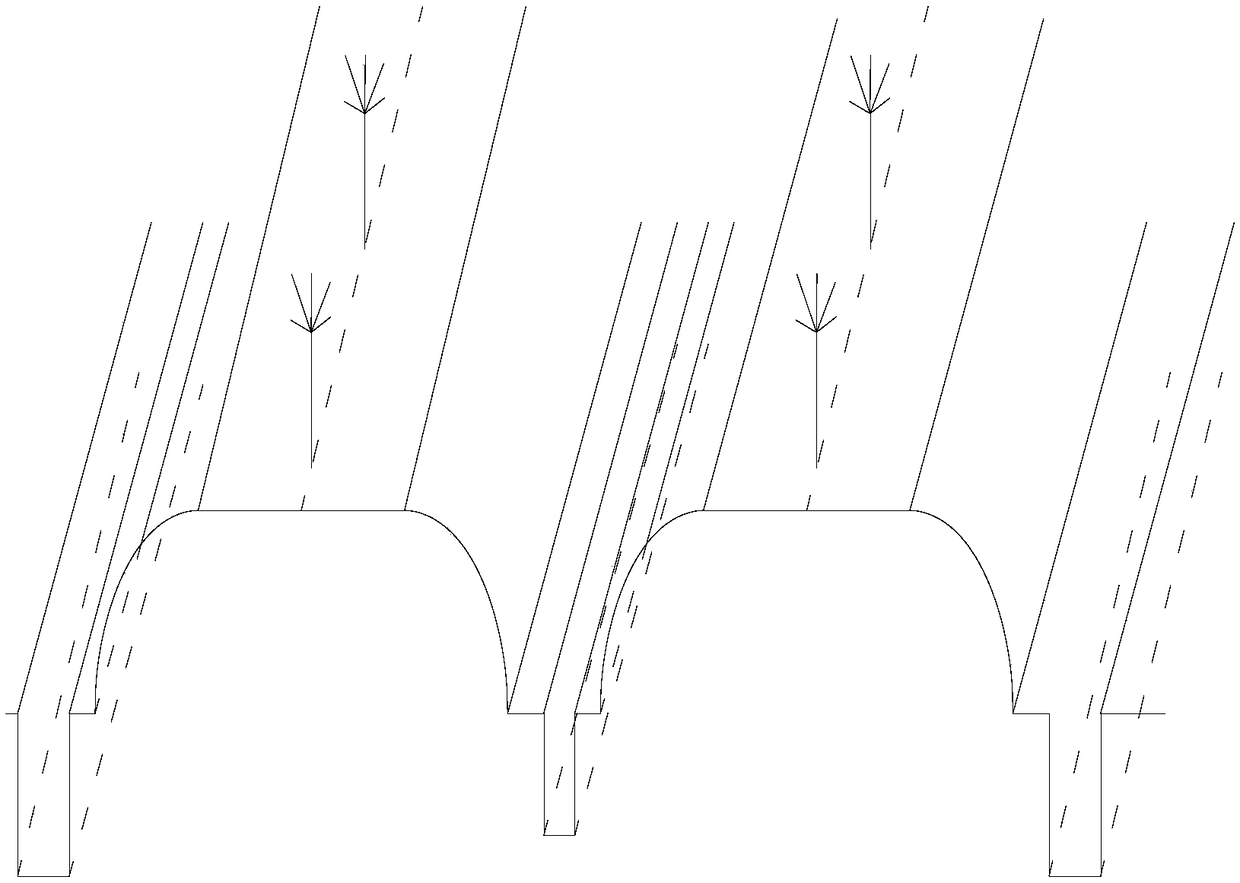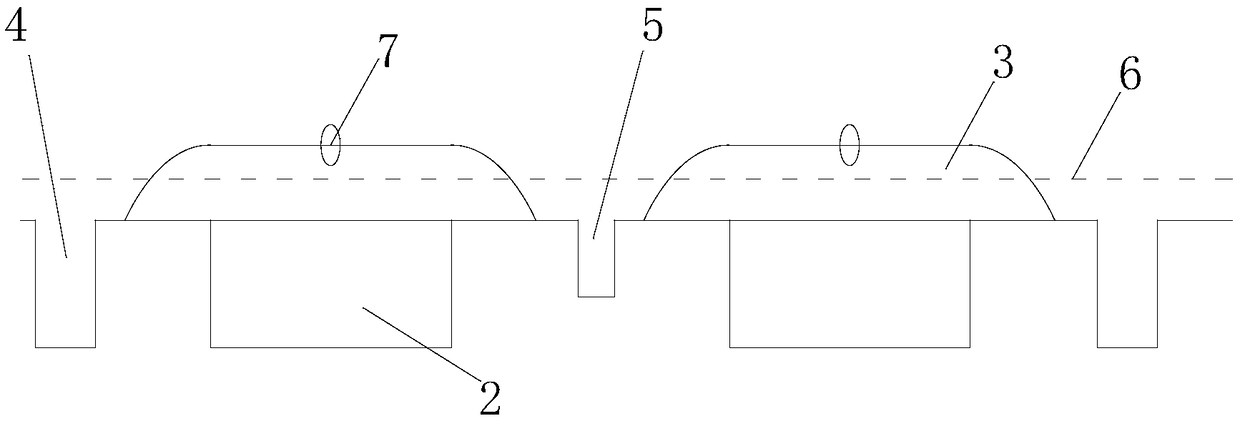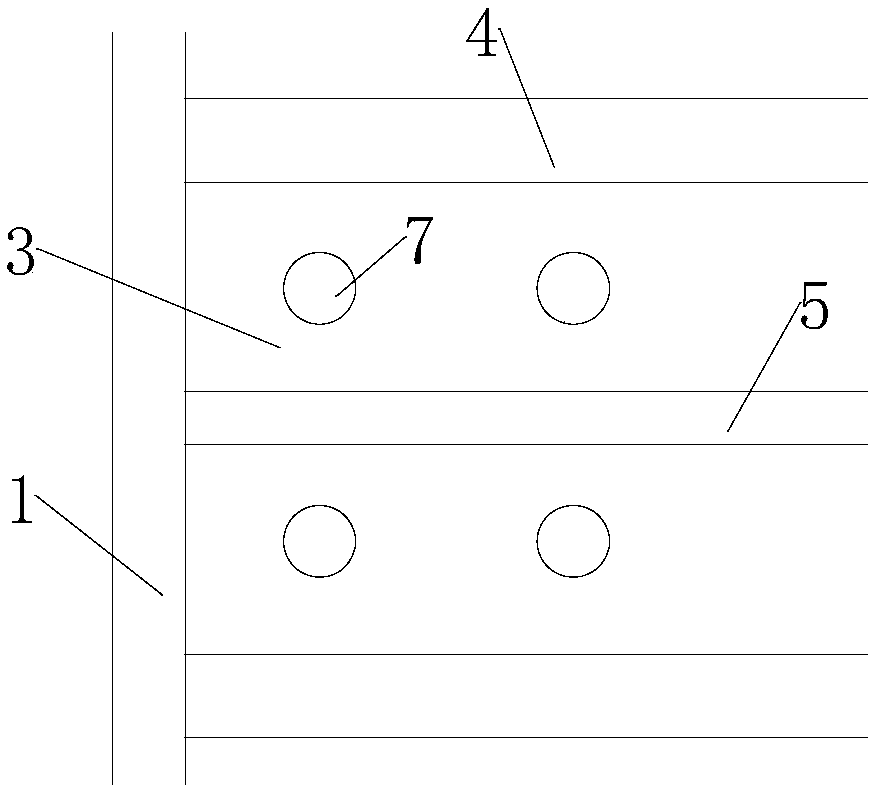Matched cultivation method preventing stagnant water in upper soil for planting citrus in rice field
A cultivation method and soil technology, which is applied in the supporting cultivation field of changing paddy fields to citrus to prevent stagnant water in the upper part of the soil, and can solve the problems of complex structure and layout of site preparation
- Summary
- Abstract
- Description
- Claims
- Application Information
AI Technical Summary
Problems solved by technology
Method used
Image
Examples
Embodiment Construction
[0027] Such as figure 1 , 2 Shown in , 3, carry out paddy field topsoil stripping earlier, begin stripping from ridge place, until the upper surface layer of plow bottom, depth 15-20 centimetre, width 1.5 meters, stripping topsoil is piled up on the side of excavation furrow 5 or box ditch 4.
[0028] Then excavate the trench 2, the depth is 30-40 cm, and the excavation width is 1.5 meters. Generally, the thickness of the plow bottom layer is about 20 cm. The bottom layer of the plow is mainly caused by the fine particles leached from the plow layer, plus long-term cultivation and compaction, to ensure that the water does not leak during the growth of rice, with strong water retention capacity and poor air permeability. The bottom layer of the plow is a continuous whole, and excavation cannot Too narrow, otherwise it will affect the infiltration of water and the root system of citrus trees.
[0029] Divide into three layers from bottom to top and carry out ditch 2 backfillin...
PUM
 Login to View More
Login to View More Abstract
Description
Claims
Application Information
 Login to View More
Login to View More - R&D
- Intellectual Property
- Life Sciences
- Materials
- Tech Scout
- Unparalleled Data Quality
- Higher Quality Content
- 60% Fewer Hallucinations
Browse by: Latest US Patents, China's latest patents, Technical Efficacy Thesaurus, Application Domain, Technology Topic, Popular Technical Reports.
© 2025 PatSnap. All rights reserved.Legal|Privacy policy|Modern Slavery Act Transparency Statement|Sitemap|About US| Contact US: help@patsnap.com



